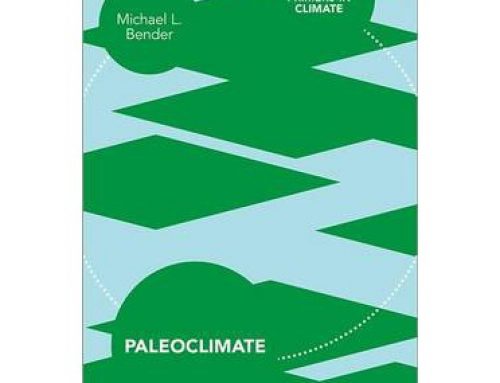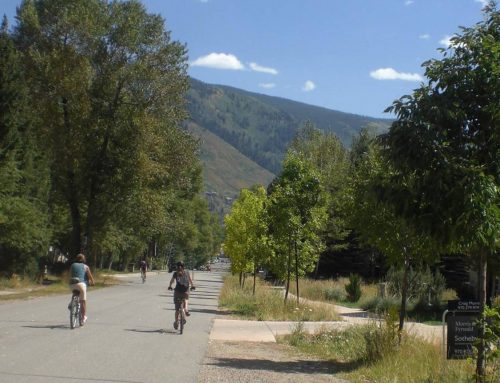Principles of Green Infrastructure
Green Infrastructure (sometimes called Low Impact Development, or LID), far from being a “new technology”, is actually the recovery of a lost technology. For example, bioswales (roadside ditches) and bioretention areas (sunken gardens), French drains (retention trenches) and brick/cobblestone streets (pervious pavers) are actually ancient technologies.
French drains and pervious pavers were in use by the ancient Romans and even before.
Figure 1. An archeological cut-away of an ancient Roman road.
Figure 2. The French drain is actually named for the American, Henry Flagg French, who authored Farm Drainage in 1860.
Figure 3. Rainwater from the courtyard and rooftops is directed toward a rain garden in these buildings fronting the 1858 Mesilla, NM plaza.
As a matter of fact, some of the best state-of-the-art modern-era practices of green infrastructure were developed by the US Soil Conservation Service in the wake of the Great American Dust Bowl. See USDA, 1954. A Manual on Conservation of Soil and Water. Soil Conservation Service Agric. Handbook No.61
Figure 4. Graphic and Caption Excerpt from 1954 SCS Manual. Water is intercepted by a diversion ditch above the gully and carried to a disposal point so slowly that little runoff or erosion occurs.
In fact, modern engineers have been practicing green infrastructure for decades. Only in recent years has it become much more prevalent in the US under catchy names like Low Impact Development (LID) and Green Infrastructure (GI)..
Figure 5. This parking lot bioswale designed by Paul Crabtree and built in Cathedral City, CA in 1990. The bioswale provides important retention storage and infiltration in a desert environment. Photo taken in 2012
Conventional engineering of the past few decades has predominantly practiced gray infrastructure, while in recent years the advantages of green infrastructure (GI) are becoming more and more appreciated by the engineering profession, environmentalists, and the general public. A few principles of green infrastructure can shed some light on why GI is effective and becoming so popular:
- Human habitats form a continuum of urban form that ranges from very natural to very urban. (The normative version of this is often referred to as the Rural-to-Urban Transect.)
Figure 6. The Rural-to-Urban Transect. Duany Plater-Zyberk.
- Normative (ideal standard or model) Infrastructure consists of the physical systems that support human survival and culture while restoring, protecting and enhancing nature.
- Green infrastructure is essentially natural while gray infrastructure is essentially mechanical.
- Normative Infrastructure forms a continuum from very green infrastructure to very gray infrastructure. (This could be referred to as the Rural-to-Urban Transect of Infrastructure.)
- Urbanization functions best when accompanied by a commensurate enhancement of nature.
- Humans should be considered a part of nature, not just exploiters of nature.
Some purportedly green infrastructure practices of modern times are, arguably, conventional gray infrastructure, especially when they become complex and employ excessive amounts of proprietary products such as pipes, geotextile fabrics, complex inlet and outlet structures, manmade filters, et cetera, most of which utilize non-renewable petroleum products. The simplicity of natural forms can be a clue to a sustainable rainwater management practice.
Figure 7. This Simple Green Street Retrofit in Portland, Oregon (left) consisted of scooping out the planter area, slotting the curb, and replanting. The Simple Green Street (right) is in Aspen, CO.
Following are several examples of the Green Infrastructure Principles in practice, as applied to the arroyos of the desert southwest.
| T1
State Park |
T2
Buffer |
T3
Sub-Urban |
T4
Urban |
T5
Main St. |
|
| ARROYO FLOOD CHANNEL | Undisturbed meandering and braided | Natural bottom and channel width with native rock drop structures | Natural bottom, minimally narrowed channel width, more formal drop structures | Natural bottom, narrowed channel with armored planted sideslopes. | Natural bottom, armored sideslopes, or gray concrete channel under street. |
| BETWEEN FLOOD CHANNEL AND TOP OF BANK | Natural, with game trails | Natural, with cow paths. Some contour bioswales | Dirt or gravel trail. Contour bioswales | Paved trail or no trail if street is adjacent | Street is adjacent |
| ADJACENT TO TOP OF BANK | Natural. | Natural, contour bioswales. | Street and/or homes | Street and/or buildings | Street is adjacent |
| PLANTINGS | Native desert plants | Native plants. Bioswales of plants transplanted from developed area | Native plants provide habitat for humans and critters | Native or cultivars for humans and critters | Plants almost solely for making humans happy |
| PEDESTRIAN TYPES | Backpackers | Bird watchers | Baby strollers | Young metros | Business people |
| BICYCLE TYPES | Single track in arroyo bottom | Single track on dirt trail | Family or kids on bikes | Townies | Delivery bikes |
| ARROYO CROSSINGS | Natural, no crossing during floods | Natural, no crossing during floods | Natural. Rural character bridges or culverts for multi-use crossings. | Urban character bridges or culverts for multi-use crossings. | Urban character bridges or culverts for multi-use crossings |
Figure 8. Arroyo Corridor Transect Matrix.
Figure 9. An illustration of the Arroyo Corridor Transect, with T1 at the top progressing to T5 at the bottom.
Figure 10. A graphic representation of an arroyo corridor transect.
A Green Thoroughfares Transect Matrix employs green rainwater infrastructure in a gradient from natural to urban:
| T1
PARK ROAD |
T2
COUNTRY LANE |
T3
LOCAL STREET |
T4
LOCAL STREET |
T5
COMMERCIAL STREET |
|
| SURFACE
(as narrow as possible to reduce runoff) |
Dirt or gravel. Crowned or slanted | Dirt or gravel. Crowned or slanted. Grass strip in the middle | Pervious pavers, French drain, ac, or pcc. Inverted crown. | Pervious pavers, French drain, ac, or pcc. Inverted crown. | Pervious pavers, French drain, ac, or pcc. Inverted crown. |
| CURBS | No | No | Optional | Yes | Yes |
| PLANTER STRIP OR MEDIAN | Natural | Planted roadside ditch w/ checkdams | Wide bioswale with native trees and groundcovers | Narrow bioswale | Tree grate. |
| SIDEPATH | None | None | Pervious pavers or pcc | Pervious pavers or pcc | Pervious pavers or pcc |
| STRUCTURAL SOILS | No | No | No | Maybe | Yes, for street trees |
| PLANT TYPES | Native.
Hardy, drought-tolerant, fire-resistant, deep rooted. |
Native or edible landscape.
Hardy, drought-tolerant, fire-resistant, deep rooted. Transplants from developed area |
Drought tolerant native trees and groundcovers with deep roots. Transplants. | Drought tolerant with native or cultivar trees and ground covers with deep roots. Transplants. | Drought tolerant trees and plants that make people happy |
Figure 11. Green Thoroughfares Transect Matrix for the desert southwest.
For feedback and more information, contact Paul Crabtree, PE, CNU-A, a leader of the CNU Rainwater-in-Context Initiative at pcrabtree .




















